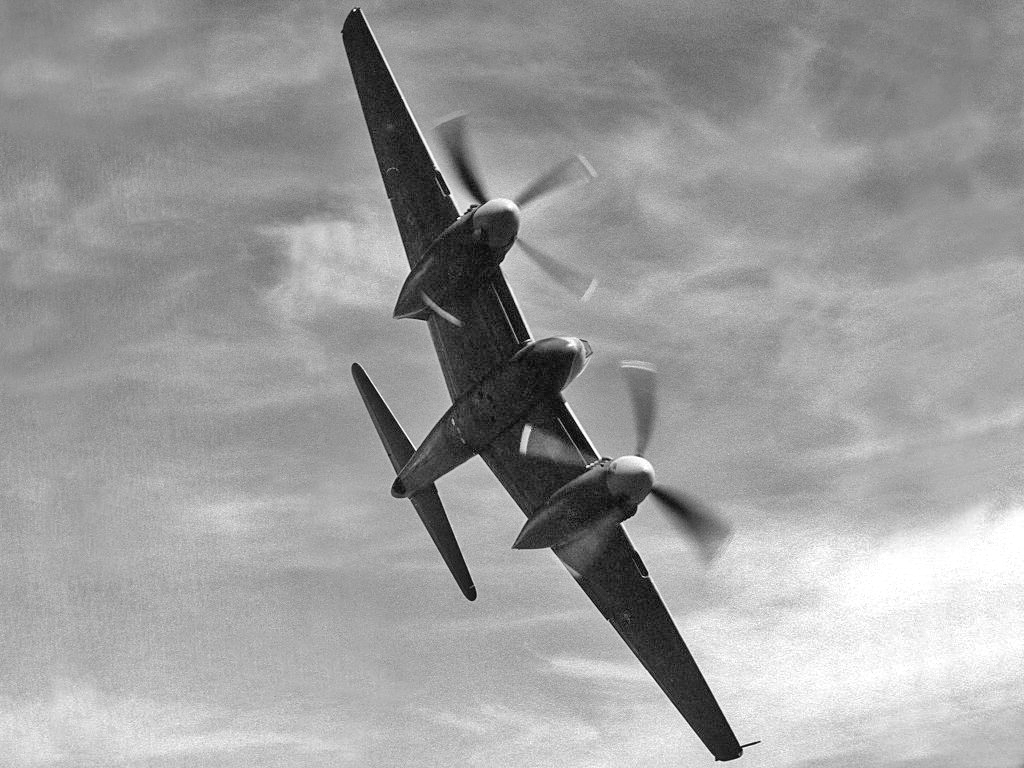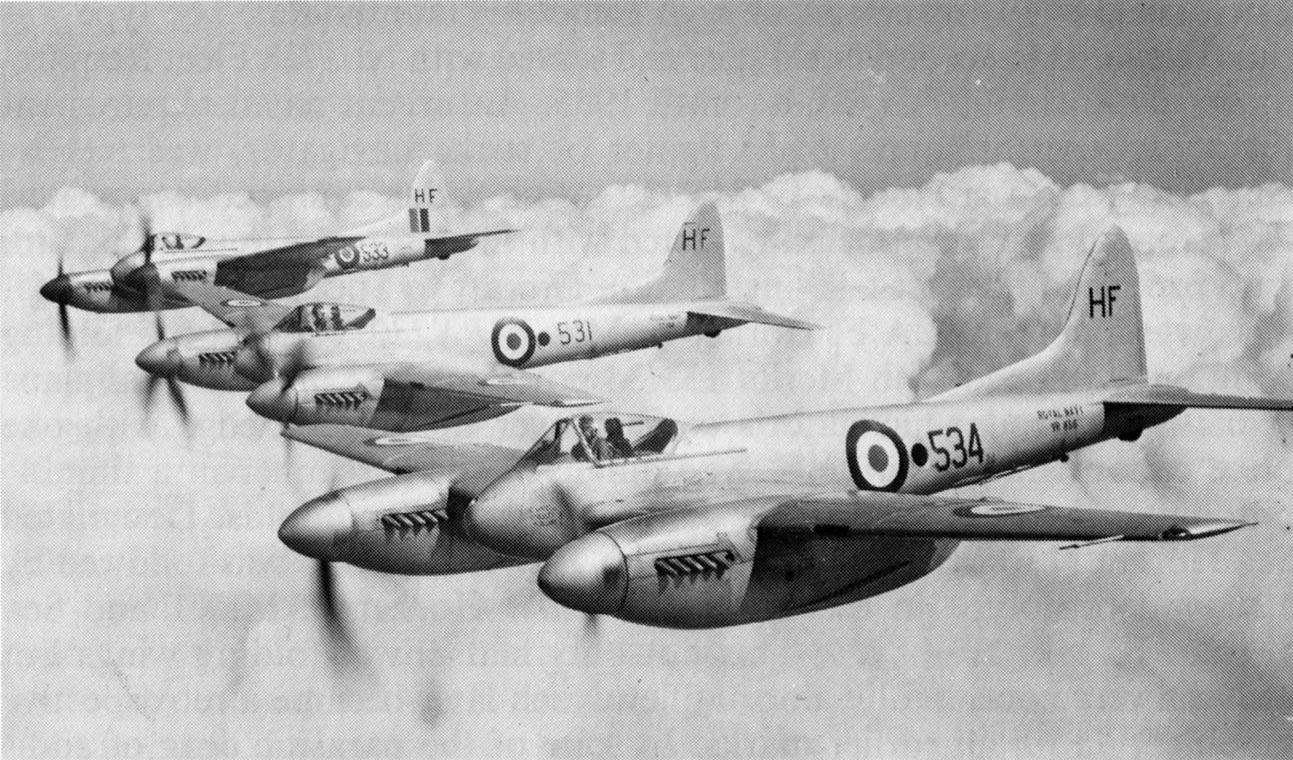Despite being frequently overlooked, this aircraft was the best of its kind. Most people are familiar with the Mosquito, but many overlook its successor, the renowned Captain Eric “Winkle” Brown, who compared it to “flying a Ferrari in the sky.”
In many ways, the de Havilland Hornet epitomizes fighter design for piston engines. With its thin fuselage, sleek aesthetics, and tightly cowled engines, the goal of optimizing performance was taken very seriously from the beginning. On July 28, 1944, the prototype (RR915), which had been constructed as a private venture, had its first flight.
The Hornet was powered by two 2,070 hp Merlin engines driving opposite-handed propellers and was built around the successful wooden construction principles of the de Havilland Mosquito. Boscombe Down trials revealed an amazing top speed of 485 mph at 22,000 feet. Such a kind also had exceptional handling qualities, especially in light of its high rate of roll.
Before the aircraft achieved operational condition, the war had already ended in the Pacific Theatre, where it was originally intended for operations against the Japanese. The F Mk 1 and the F Mk 3, the latter with more fuel capacity and a larger dorsal fin, were the two major models used by the RAF Fighter Command.
The Hornet served in the Royal Navy as well, at first as a single-seat fighter (Sea Hornet F 20). The installation of an arrester hook and wing-folding were the principal improvements. In the back fuselage, space was also reserved for an oblique reconnaissance camera.
‘An often forgotten aircraft that was nevertheless the pinnacle of its type. Most have heard of the Mosquito, but many forget its successor – described by the venerable Captain Eric ‘Winkle’ Brown as “Like flying a Ferrari in the sky”,’ says Alex Patrick, an aviation expert, on Quora.
Patrick goes on to say,
‘Besides looking bloody fantastic, it was one of the fastest piston-engined aircraft ever designed.
‘Continuing the colossal success garnered by the wartime Mosquito, de Havilland began the Hornet as a private venture in 1941.

‘Intended to improve on the Mosquito and become the main long-range fighter intended for the RAF operating in the Pacific theatre, it continued the basis of a wooden airframe and two powerful Merlin engines – however, it would be smaller and more streamlined than the Mosquito, having just one seat and a narrower fuselage without a bomb bay.
‘Whilst the Mosquito, originally designed as a light bomber, was a true jack-of-all-trades, the Hornet was designed primarily as a fighter.
‘A high-overpowered aircraft. The favorite piston aircraft of Captain Eric ‘Winkle’ Brown, who flew the most different aircraft types of any pilot, stated that you could do almost anything you wanted using just one of the Hornet’s engines, let alone using both.
‘First flying in 1944, the D.H.103 Hornet was completed too late for wartime service, entering RAF service in 1946. It was also procured by the Royal Navy, being tested rigorously on carrier landings.
‘Though it was used by a fair number of Fleet Air Arm squadrons, it was largely deemed unfit for the smaller Colossus and Majestic class of light fleet carriers.
‘Hornets saw extensive service during the Malayan Emergency in 1951, flying dozens of missions and replacing the fairly sub-par Bristol Brigands. They were usually equipped with a mix of 500lb bombs and RP-3 unguided rockets, as well as a plentiful supply of 20mm rounds for strafing guerrilla positions.’
Finally, Patrick says,
‘This would be their only major outing, however, and by 1955, ten years after the first ones had rolled off the production lines, the Hornets were retired from service. Nearly 400 had been built, and they served as heavy fighters, fighter bombers, photo-reconnaissance, and night fighters.
‘Most were replaced by Sea Furies in the Fleet Air Arm, and de Havilland Venoms in the fighter-bomber role in the RAF.’

Photo by Umeyou via Wikipedia and Crown Copyright

